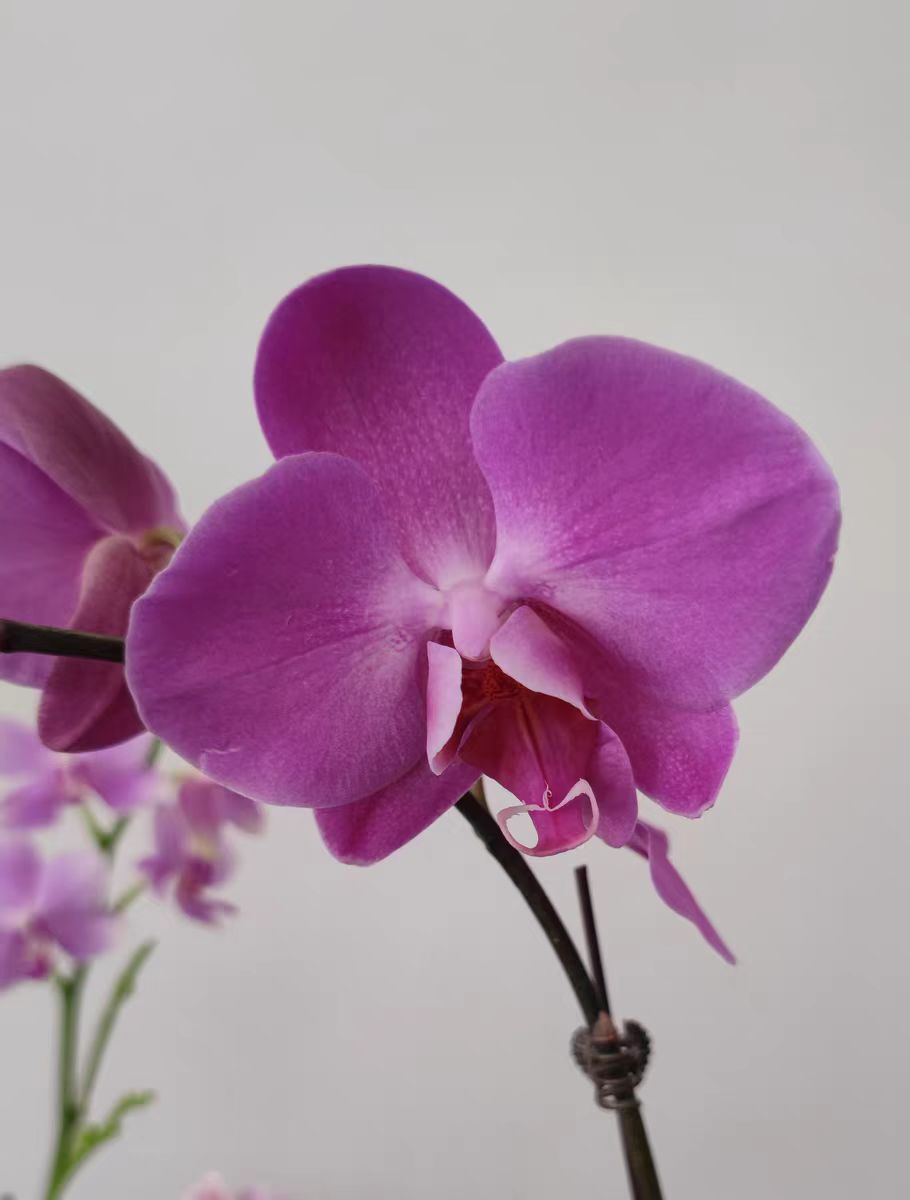The most frustrating thing about growing Phalaenopsis is probably waiting eagerly for a long time, only to have one or two flower spikes emerge? I've also made many mistakes when growing them myself. Today, I'll analyze the reasons for fewer flower spikes and share a few tips for "triggering abundant spikes"!
Why are there fewer flower spikes?
The first "culprit" might be improper temperature. As a tropical plant, Phalaenopsis prefers a daytime temperature of around 25°C and a nighttime temperature of around 18°C, with a 10°C diurnal temperature difference to encourage flower spike growth. If your home has excessive heating in winter, or if you always leave it on a cold balcony below 15°C, the flower buds will never wake up!
Inadequate light and fertilization are also major issues. Many people think Phalaenopsis loves shade and keep it in a corner, but this leaves it "starving" and unable to grow flower spikes! In fact, giving it 2-3 hours of gentle diffused light daily—such as morning or evening sunlight—helps it accumulate energy. Fertilization is crucial: starting in autumn, apply phosphorus-potassium fertilizer (e.g., potassium dihydrogen phosphate diluted 1:1000 with water) every 10 days, which is much more effective than regular compound fertilizer!
Another easily overlooked factor is root health. Phalaenopsis has aerial roots, and if the roots are stuffy or rotting, it will have no energy to grow flower spikes! Using too sticky soil or overwatering can suffocate the roots. It is recommended to replace the soil with breathable sphagnum moss or bark. Before watering, check the surface sphagnum moss—water thoroughly only when it is dry and white to let the roots "breathe freely."
To promote more flower spikes, besides avoiding these pitfalls, you need to actively "stimulate" the plant! The most practical trick is the "temperature difference method": place the Phalaenopsis in a room with normal room temperature during the day, and move it to a place at 15-18°C (such as a north-facing balcony) at night. Continue this for half a month to simulate the temperature difference in its natural habitat, and flower buds will soon emerge.
Pruning also matters. After flowering, don't throw away the plant directly—cut the flower stem 2-3 nodes below the withered flower to reduce nutrient consumption and promote new flower spikes. If your Phalaenopsis has thick, strong leaves but no flower spikes, try the "water deprivation method": stop watering for about 10 days, and water again when the leaves slightly soften. This "sense of crisis" will prompt it to hurry and grow flower spikes!
Additionally, regularly "repotting" is important. Repot the plant with loose potting material every 1-2 years in spring, check the roots, and cut off rotten or empty roots to create new growth space.
Remember, growing Phalaenopsis requires understanding its "temperament" to harvest a pot full of flower spikes! If you encounter the problem of fewer flower spikes again, try these methods—they will surely turn your Phalaenopsis into a "flowering machine"!
What's the matter with fewer flower spikes in Phalaenopsis?

Share with
Tagged in :




Leave a Reply